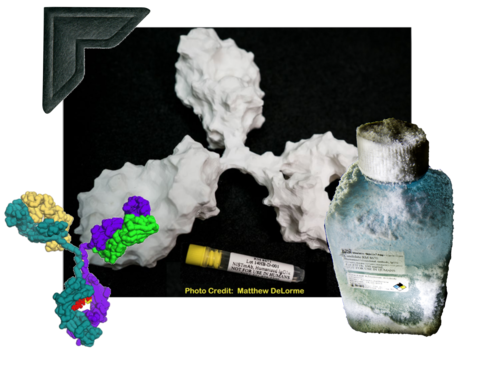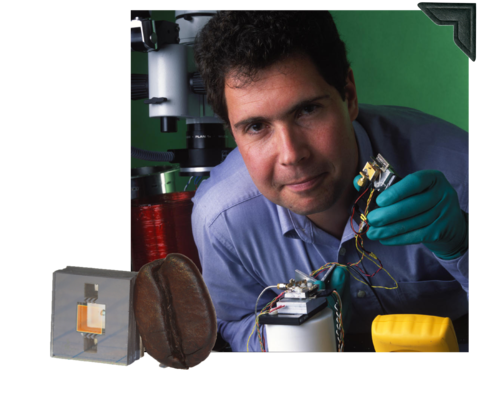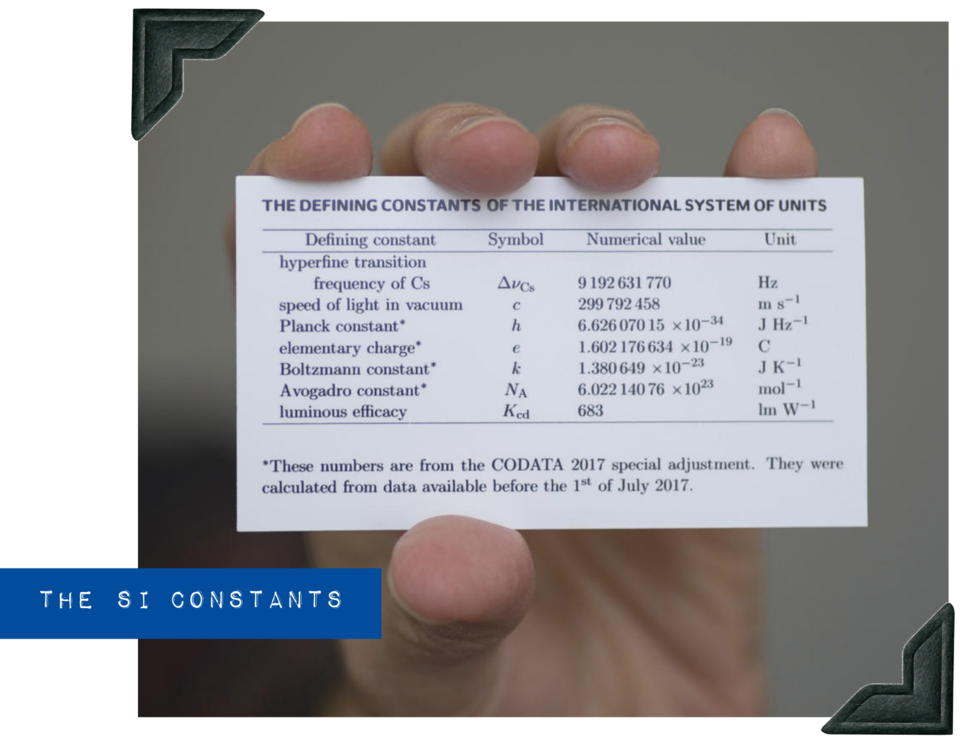Standards and Measurement Challenges in the 21st Century
Measurement and standards challenges — and opportunities — abound as we head further into the 21st century. Let’s look at two examples. The first could revolutionize drug design — and make those drugs more available to the wider public. The second could democratize precision measurement, making it possible for anyone anywhere to achieve the same world-class accuracy that NIST can in its own labs.
I.
Until recently, most of our medications, such as ibuprofen or aspirin, were created using basic chemistry. With relative ease, pharmaceutical manufacturers could produce drugs with uniform properties. However, a new, more complex and powerful form of medication, known as biological drugs, is emerging. Representing a broad new category of drugs, they can be made of proteins or DNA, sometimes even from living cells and tissue.
In August 2015, former President Jimmy Carter was diagnosed with a once-untreatable skin cancer that had spread to his liver and brain, and he seemed to have only weeks or months to live. But in December 2015, he received the drug pembrolizumab, made of biological antibodies, and, along with radiation therapy, it dramatically reversed his cancer.

Able to treat everything from multiple cancers to rheumatoid arthritis, diabetes and retinal degeneration, biological drugs now dominate pharmaceuticals, easily making up more than half of the top-selling drugs in sales.
They're “wonder drugs” that provide solutions to important health challenges, says Steve Choquette.
However, for all of their potentially revolutionary benefits, biologics have a problem.
“They're unbelievably expensive to make,” Choquette says.
This is because biologics are very hard to manufacture. For one thing, they’re nearly impossible to duplicate perfectly because they are made from living matter. While aspirin is made from small molecules, drugs based on biological cells and even single proteins have building blocks that are generally bigger in size, made of many more atoms and molecules. Biologics will inevitably have slight differences from batch to batch. This presents challenges in terms of quality control and safety.
These manufacturing challenges also make it more difficult to make cheaper, generic versions of biologic drugs, known as biosimilars.
“With aspirin, or with any of the statin drugs, we know exactly what that drug looks like, and we know three ways to Sunday how to measure it,” Choquette says. “For a generic, you know exactly how similar it is to the original drug.”
But the larger size of the molecules in biological drugs exponentially increases the differences that can occur from batch to batch. “Its structure depends on how it's grown, on how it's processed,” Choquette says. If the molecules in one batch twist in different directions from those in another batch, the drug may not work as intended. It’s important for manufacturers to detect these structural changes and understand if they affect how well the drug works.
To address this need, NIST produced a measurement standard for biological drugs: an antibody protein that consists of more than 20,000 atoms. Known as NISTmAb, the antibody was donated by AstraZeneca and then measured thoroughly by NIST and collaborators. NISTmAb is so thoroughly analyzed that laboratories can use it as a reference to help them develop more accurate and reliable ways to measure the biological drugs they are developing for better quality control. It’s also been a useful tool for scientific studies of biological drugs.
“In our research, we’ve been relying heavily on the NISTmAb RM 8671 as a reference molecule,” says Peter Schuck of NIH. “For us, as developers of biophysical methodology, the availability of a reference molecule is invaluable because it enables colleagues to precisely repeat the procedures and analyses we are developing. Prior to the NISTmAb, this was a problem since questions about the detailed properties of the macromolecular samples in different labs clouded the comparison of results. For this reason, the NISTmAb facilitates advances, not only in pharmaceutical industry applications but also for basic research in structural biology.”
NIST is about to take one step further: Agency researchers and their collaborators are working on what will be “our first living cell reference material,” says Choquette. Based on a type of cell from hamsters, known as the CHO cell, it produces copies of a hamster antibody protein meticulously studied by NIST.
“This is going to be transformational,” Choquette says.
Drug companies can thoroughly compare their copies to the original reference protein. Such comparisons could then help them develop and hone their own laboratory methods for measuring the drugs they are designing. Whether developing biosimilars of existing drugs, or completely new ones, they could then better measure how any molecular-level changes that may occur in their drugs during the manufacturing process might affect how well it works. NIST plans to release this new reference material in the next six months to a year — and hopes it makes a meaningful impact in enabling better, less expensive, more widely available biological drugs.
II.

As the nation’s measurement laboratory, NIST has state-of-the-art facilities on its campuses. However, most people can’t access these world-class capabilities on a day-to-day basis. But imagine if companies, the military, universities, other government agencies and organizations could perform NIST-level measurements of mass, length and electric current in their own locations?
That is the vision of the NIST on a Chip program.
NIST on a Chip aims to bring the agency’s cutting-edge measurement-science technology and expertise out of its labs directly to users in commerce, academia, defense and other organizations. The ultimate goal of NIST on a Chip technology is for it to be deployed nearly anywhere and anytime, without the need for NIST’s traditional measurement services such as calibrations.
NIST on a Chip is essentially a suite of measurement technologies based on the time-tested rules of quantum physics, making them inherently accurate and reliable.
“What if you had an instrument that’s like your own primary standard, your own primary measurement instrument in your house or in your factory floor?” explains NIST’s Jim Fedchak. “If you had your own, you wouldn't need to send it back to NIST for calibration.”
With the modern SI, such a technology is possible for all the units, from the second to the kilogram, “because we can now define every unit in terms of fundamental constants.”
NIST is developing the technology but won’t actually make the devices. Instead, the idea is for companies to commercialize and make products out of NIST-developed technologies for end users. This way, NIST hopes to nurture the growth of an entire new industry devoted to on-demand, world-class measurement science.

Conclusion: Standards Make the World Work

Now that we've taken a tour of standards and NIST's role in them, you may see the world a little differently the next time you visit your local hardware store. Maybe you need a new lightbulb, or tape measure, or garden hose. Perhaps you have to pick up a mini-refrigerator, or cement for an outdoor project. Maybe you have been eyeing a smart thermostat that you can control from your phone. You can grab any of these items from the shelf, and not have to worry that they will function as advertised. You can choose among several brands, and they will all work for you.
As you know by now, what makes this possible is much more than companies manufacturing these products and scientists inventing these technologies in their labs. It’s also the accurate calibration of tape measures, the documentary standards for hose fittings, and the accreditation of testing laboratories for LED lighting. Maybe the cement manufacturer measured the properties of its product with the help of a NIST standard reference material. Quite possibly, a refrigerator maker used NIST’s standard reference data to choose its refrigerant. Perhaps a smart thermostat manufacturer applied NIST’s cybersecurity guidelines to prevent your device from being hacked.
The reliable products we buy depend on the interconnections between documentary standards, measurement standards, calibrations, accreditations, standard reference materials, data, and instruments. Each of these products and services provides specific information and tools that make your Wi-Fi fast, your buildings safe, and your cholesterol readings accurate.
“Details matter,” says NIST’s Sally Bruce. And for more than 100 years, NIST has existed to support the details that go into standards and measurements so that they can serve our society and economy, make possible cutting-edge science and technology, and enable our modern world to work seamlessly.

